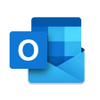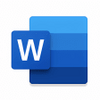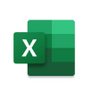Communicate with the members of a team in Office 365 via a virtual in-system workspace
Communicate with the members of a team in Office 365 via a virtual in-system workspace
Popular programs in Office Suites
What is Microsoft Teams
Microsoft Teams looks to break through the iron grip held be Slack to provide an alternative method for internal business communications. While Slack isn't the first platform designed to help a company keep all of its employees in touch, it's certainly one of the best. This has earned it an exceedingly high install base at companies throughout the world and put it in a position of dominance in much the same way that Facebook more or less owns social media. Teams is Microsoft's stab at the chat communications market, and they've clearly taken the lessons taught by Slack and Facebook Messenger to heart. While it may not be strong enough to supplant the momentum established by Slack, Microsoft Teams is a highly competent alternative, and the tight integration with the existing Microsoft ecosystem provides it with additional value to a wide range of different businesses.
In much the same way that Microsoft upgraded the Windows 10 version of Outlook to compete directly with Gmail, Teams is more iterative than revolutionary. It doesn't exactly reinvent the wheel, but it draws off proven principles implemented in platforms like Slack and brings in enough unique elements to make it stand apart from the competition. As is the case with its competitors, it's intended as a complement to traditional email rather than an outright replacement, and it's best used in a workplace where Outlook is the de facto standard. Where businesses are concerned, Teams is intended to be the beating heart of the Office experience, and if you're using 360 to power your business, it's almost a practical necessity. Three pillars make up the communication experience. Group chats make use of threaded conversations like traditional message boards, making it much easier to organize your thoughts and make sure that your larger communications don't become unnecessarily cluttered. Direct text conversations allow for one on one communications outside these larger group spaces, and they can be transformed into video chat with a single click of a button. All the basics are covered, and the clean and communicative interface makes it easy to find what you need without having to dig through complicated menus.
But the real strength of Teams comes naturally in the form of integrations. Microsoft's size, legacy, and prominence in the market has provided them with a wealth of first party services and third party providers, and that allows them to integrate a lot into the Teams package without having to rely on wonky and sometimes complicated APIs. Sharing a wide range of files through the use of OneDrive is a seamless affair, and there's even the ability to embed YouTube videos and gifs.
It's hard to evaluate Microsoft Teams in its own right. It's essentially Slack backed by the muscle and integration you can expect to find from Microsoft. If your business has already bought into the 360 Office suite, it's a natural choice. Otherwise, you might just be better off with Slack.
Pros:
- Tight integration with both Microsoft and third party platforms
- A high and tight interface that will be familiar to any experienced Windows user
Cons:
- Doesn't do enough to separate itself from the competition






